Generation Z is already giving up on the American Dream, which is increasingly becoming out of reach. How can employers help them?
Continue readingThe U.S. Economy: Is There ANY Bad News?
As we welcome 2024, the landscape of economic forecasts has been in a constant state of flux, especially throughout the holiday season. As we step into the new year, one can’t help but wonder about the prospects of the 2024 US economy. Amidst a stream of headlines, many of which lean towards the positive, we find ourselves sifting through the information – eager to uncover the encouraging trends while also remaining vigilant for any potential challenges that may lie ahead.
Inflation is Under Control
One of the most remarkable aspects of the current economic situation is the successful containment of inflation. For years, concerns about rising prices have dominated discussions, but now we find ourselves in a scenario where inflation is finally under control. In 2023, the annual inflation rate saw a significant decline, falling from its peak of 7.5% earlier in the year to a more manageable 2.6% by November. This marked decrease reflects the effectiveness of the Federal Reserve’s monetary policy and its commitment to price stability.
The core inflation rate, which excludes volatile food and energy prices, also exhibited a noteworthy deceleration. In the same period, core inflation dropped from 5.2% to 3.2%. This demonstrates that the pricing pressures affecting essential goods and services are diminishing, providing relief to American households.
Policymakers at the Federal Reserve have been resolute in their efforts to keep price pressures in check, ensuring that Americans can maintain their purchasing power. Their commitment to a long-term inflation target of 2% has played a pivotal role in fostering stability and predictability in our daily lives. As we look ahead to 2024, the outlook for inflation remains positive, with a well-managed and controlled inflationary environment contributing to the overall strength of the US economy.
The Fed Looks to Hold Longer Than Expected
The Federal Reserve’s decision to maintain higher interest rates for an extended period might initially appear to be a cautious move. Still, it’s important to recognize the wisdom behind it. Since peaking in 2022, the Fed’s favored inflation gauge has fallen sharply, reaching an annual rate of 2.6 percent in November. This marked decrease in the inflation rate is a testament to the central bank’s commitment to its mandate of ensuring price stability.
By resisting immediate rate cuts, the Federal Reserve demonstrates its confidence in the effectiveness of its policies. Rather than reacting hastily to short-term fluctuations, the Fed is taking a deliberate approach to safeguard the economic gains achieved in recent years. This measured stance is essential for maintaining the long-term health and resilience of the US economy, and it provides businesses and consumers with a sense of stability and confidence as we navigate the economic landscape of 2024.
The Job Market Remains Strong
One of the most encouraging aspects of the current economic scenario is the solid job gains. In December, employers added a robust 216,000 jobs, exceeding expectations. Notably, the unemployment rate held steady at a low 3.7%, showcasing a year-over-year improvement compared to the previous year’s 3.5% rate.
Furthermore, manufacturing jobs, a critical component of the U.S. economy, have continued to play a pivotal role. While the overall job market is thriving, manufacturing employment has shown resilience, with the average workweek remaining largely unchanged at 39.8 hours in December. Overtime in manufacturing also remained consistent at 2.9 hours. Although manufacturing employment experienced some fluctuations in 2023, it remained a crucial contributor to the nation’s workforce, supporting the broader economic growth story.
As we embark on a new year, it’s clear that the United States is in an enviable economic position. Inflation is under control, the stock market is factoring in measured rate cuts, and job gains remain solid while unemployment stays low. When we ask, “What’s the Bad News?” it’s challenging to find significant negative aspects in our current economic landscape. This positivity is a testament to the resilience, adaptability, and strength of the US economy. As we move forward, we can appreciate the strides we’ve made and face any potential challenges with confidence and determination.

So What’s the Bad News?
Even though the traditional measurements for economic health remain relatively strong, there are underlying issues that linger beneath the economic shine:
The US debt pile surpassed $33 trillion in 2023, up more than $3 trillion during the year and $10 trillion since 2019, the last calendar year before the COVID-19 pandemic. Meanwhile, the latest Congressional Budget Office (CBO) projections point to a budget deficit that will be above 5% of gross domestic product (GDP) for the next ten years.
At this rate, the amount of US government debt could surpass $50 trillion by 2033. This, at a time of higher interest rates (at least for now), could mean that, by 2031, the country spends more on interest payments than it does on non-defense discretionary expenditures (such as funding for transport, education, health, international affairs, natural resources and the environment, and science and technology). This is unsustainable.
Manufacturing also seems to be struggling to grow in these uncertain times, but remains resilient. There is also a gap in perception between the reduction of inflation and what people are actually feeling at the cash register.
Even though the numbers are trending in the right direction and gas (at this moment) is under $3 per gallon, there is a discrepancy between the actual economic conditions and public perception, particularly regarding inflation. Many Americans feel that the economy and inflation are worse than they actually are.
And finally, The US economy’s projected performance in 2024 suggests modest growth, with an expected real GDP increase of only 1.0%, a deceleration from the 2.4% growth anticipated in 2023. This forecast, as reported by Barclays Investment Bank and Barclays Private Bank in November 2023, indicates a slowing economy compared to previous years. In 2022, the GDP growth was 1.9%, with consumer price index (CPI) inflation at 8.0%, and the unemployment rate at 3.6%. Looking ahead to 2024, the CPI inflation is forecasted to ease to 2.6%, while the unemployment rate is expected to slightly increase to 4.2%. The gross public debt is projected to rise to 126.2% of GDP, up from 122.0% in 2022 and 123.2% in 2023. Private consumption, which was at 2.5% in 2022, is anticipated to further slow down to 1.1% in 2024. Despite these modest figures, the US economy’s performance still compares favorably with many European nations.
As we approach the new year, there is a blend of encouraging news and the usual uncertainties. Let’s maintain a steady course, fostering a spirit of optimism and hope, as we continue to propel forward on this journey.
12 High Paying Jobs for 2024 – No Degree Required!
The labor market in 2024 is set to see a significant demand for skilled trade jobs, a vital sector in the US economy. These jobs offer lucrative pay, engaging work environments, and are essential in various industries. Here’s a list of 12 high-demand, high-paying trade jobs:
1. Ultrasonographer ($131,161/year): With a 10% job growth rate, they perform diagnostic medical imaging.
2. Respiratory Therapist ($104,437/year): Essential in healthcare with a 13% growth rate, they assist patients with breathing issues.
3. Dental Hygienist ($99,013/year): A 7% growth rate job focusing on oral health.
4. Construction Manager ($88,319/year): With a 5% growth rate, they oversee construction projects.
5. Aircraft Mechanic ($82,476/year): Ensuring aircraft safety, with a 4% job growth.
6. Cable Technician ($70,714/year): A 6% growth rate in this tech-based role.
7. Industrial Mechanic ($69,637/year): They maintain and repair industrial machinery, with a 13% growth rate.
8. Solar Installer ($69,422/year): A rapidly growing field at 22%, focusing on renewable energy.
9. Real Estate Appraiser ($64,075/year): Valuing properties with a 5% growth rate.
10. Electrician ($62,739/year): Essential for electrical systems with a 6% growth rate.
11. Licensed Practical Nurse ($59,125/year): A vital healthcare role, growing at 5%.
12. Wind Turbine Technician ($58,005/year): A booming field with a 45% growth rate, focusing on sustainable energy.

These trades, requiring varying levels of vocational training or specialized schooling, are not just financially rewarding but are crucial for the economy’s health. Their roles are more than just jobs; they’re careers that shape the very infrastructure and well-being of society. As technology and industries evolve, these trades are at the forefront, ensuring efficiency, safety, and innovation. Emphasizing these trades’ importance and encouraging more people to enter these fields is essential to bridge the impending trade gap in the US labor force.
The evolving job market is increasingly valuing trades and associate degrees, marking a shift in what constitutes the ‘smart kids’ club. A 2023 survey by Intelligent.com reveals that nearly half of US companies plan to eliminate bachelor’s degree requirements in 2024, a trend that started in 2023. This change is driven by a desire to create more diverse workforces and the recognition that experience often outweighs formal education. Employers are now focusing on practical skills, with 80% prioritizing experience over education. Additionally, alternative educational paths like certificate programs and apprenticeships are gaining value, reflecting a broader understanding of skill acquisition beyond traditional four-year degrees. This trend underscores the growing importance of practical, hands-on skills in the modern labor market.
The Michigan Apprenticeship Program is a dynamic pathway combining practical working experience with learning, beneficial for both employers and apprentices. It’s a no-cost service provided by the State of Michigan, designed to simplify the process of registered apprenticeship. The program aims to build a skilled workforce by connecting Michigan employers with job seekers, offering crucial support and resources to both parties.
Registered Apprenticeship in Michigan, supported by the Department of Labor/Office of Apprenticeship, allows employers to create customized skilled trades training programs. This is particularly important in industries experiencing a significant gap between job openings and skilled workers. The program is recognized as a valuable training model by the Michigan Department of Labor and Economic Opportunity. It involves on-the-job training and classroom instruction under the supervision of experienced industry professionals, serving as mentors. This approach not only benefits workers by providing job-related, classroom-based learning with paid on-the-job training in high-skill, high-wage, in-demand industry occupations, but it also helps employers by creating a pipeline of professional workers through work-based learning.
The program includes seven core components: Industry Led, Paid Job, Structured On-the-Job Learning/Mentorship, Supplemental Education, Diversity, Quality & Safety, and Credential. Each Registered Apprenticeship program is customized to meet specific employer needs, and upon completion, participants receive a nationally-recognized industry credential.
This approach is proving to be an effective strategy for recruiting, training, and retaining employees, perfect for filling the talent pipeline with highly skilled, diverse, and productive workers. It demonstrates the state’s commitment to developing a skilled workforce that meets the needs of today’s and tomorrow’s industries.
Meet Four Battle Creek Employers Who Are Training Tomorrow’s Workforce
Four Battle Creek employers were celebrated for pioneering in Registered Apprenticeship Programs. Recognized at Kellogg Community College, these firms exemplify effective workforce training, aligning with Michigan’s strategy to bolster the local talent pipeline and support skilled labor development. This initiative is part of a broader effort to upskill Michigan’s workforce.
Continue readingLack of Labor: Can America Fill Its Factories?
As Michigan experiences a significant resurgence in manufacturing jobs, factory leaders and HR professionals are at a pivotal crossroads. The challenge? Addressing the stark workforce gap that threatens to slow this industrial reawakening.
Continue readingA Shift in Strategy: Ford’s Revised Commitment to the Marshall EV Plant
In late September, Ford Motor Co. made the decision to pause operations at the BlueOval Battery Park in Marshall, Michigan, amidst a UAW strike, raising concerns and expectations among stakeholders. This move, while temporary, hinted at the complex labor dynamics in the automotive industry, particularly in the evolving electric vehicle (EV) sector. Initially, Ford’s investment in the Marshall Megasite was seen as a significant step towards achieving ‘battery independence’ for the U.S. and tripling EV production by 2026. The site promised substantial economic benefits, injecting $3.5 billion into the local economy and creating 2,500 jobs.
However, the recent announcement of Ford scaling back its commitment to the Marshall plant marks a significant shift. The revised plan entails a reduction of 800 jobs and a cut in investment by over $1 billion. This reduction translates to a 40% decrease in the plant’s production capacity, aligning Ford’s strategy with the current pace of EV market growth. Despite these changes, Ford intends to open the plant by 2026 and has resumed work at the site after a two-month hiatus.
The scaling back of the Marshall plant has led to mixed reactions. While some see it as a pragmatic response to market conditions, others view it as a setback for Michigan’s economic development and the EV industry. Mark Truby, a Ford spokesperson, emphasized the company’s continued commitment to EVs but acknowledged the slower growth rate than anticipated. Stacey LaRouche, press secretary for Gov. Gretchen Whitmer, highlighted the positive aspect of bringing 1,700 jobs and significant investment to Michigan, despite the scale-back.

The UAW strike involving Detroit’s ‘Big Three’ automakers played a critical role in shaping the labor dynamics around the Marshall project. The strike’s timing coincided with Ford’s decision-making process for the plant, suggesting an interplay between labor negotiations and strategic corporate decisions. Importantly, the 2023 UAW strike brought to the forefront issues of worker protections in the EV sector. The negotiations likely influenced Ford’s approach, ensuring that the evolving EV industry also addresses workers’ rights and safety, a crucial aspect as the automotive sector transitions to new technologies and production methods.
Ford’s strategic decision to resume work at the Marshall site reflects its commitment to adapt to market conditions and balance investment with demand. The company now expects the facility to produce 20 gigawatt hours of batteries annually, sufficient for about 230,000 vehicles, a reduction from the previously anticipated 35 gigawatt hours. This recalibration is in response to slower-than-expected growth in EV adoption and a disciplined approach to capital allocation.
The scaling back of the project has implications for the state’s subsidy package, initially around $1.8 billion, with adjustments expected in line with Ford’s reduced investment. While some local residents and environmental groups have expressed concerns, the project continues to be a key piece in Michigan’s strategy to revitalize communities and foster key industries for the state’s future.
Ford’s Marshall EV battery plant represents more than just an industrial project; it is a microcosm of the broader challenges and opportunities in the transition to electric vehicles. As the automotive industry navigates this transformation, balancing market demands, labor dynamics, and community impacts will be crucial. The evolving situation at the Marshall plant illustrates the need for adaptive strategies and collaborative efforts to ensure that the shift towards sustainable transportation benefits all stakeholders involved.
Unemployment Insurance Fraud: A Drain On Us All.
As we observe Fraud Awareness Week, it’s crucial to shine a spotlight on the ongoing battle against Unemployment Insurance (UI) fraud and the dedicated efforts of teams like ours at WSI Recruitment and Staffing in safeguarding the integrity of the labor market
In the ever-changing landscape of employment, Unemployment Insurance (UI) fraud poses a significant challenge, affecting not just the state funds but also the integrity of businesses and the welfare of legitimate claimants. This week, we’re taking a moment to highlight and celebrate the tireless efforts of our WSI Recruitment and Staffing Risk team, who play a crucial role in investigating claims and preventing UI fraud, thus helping keep taxes and government waste down, ensuring our business stays competitive, and safeguarding our clients from fraudulent claims.
Understanding UI Fraud
UI Fraud is a serious offense that involves individuals misrepresenting information to claim unemployment benefits unlawfully. This deception can take many forms, from claimants working while collecting benefits without reporting earnings, to employers misclassifying employees to evade taxes. The consequences are far-reaching, increasing unemployment taxes for businesses, burdening legitimate claimants, and straining the state’s unemployment funds.
Our Response to UI Fraud
At WSI Recruitment and Staffing, our dedicated Risk team members, Jade and Suzette, are constantly vigilant, employing strategies to detect and prevent such fraudulent activities. By staying informed about the latest fraud trends, diligently investigating all unemployment claims and injuries for WSI Associates, and implementing robust verification processes, we’re not just protecting our business but also contributing to a more honest and efficient labor market.

Recent Cases and State Actions
Michigan has witnessed a range of UI fraud cases, emphasizing the need for constant vigilance. From individuals exploiting the identities of prison inmates to fraudulent activities involving state contractors, these cases underscore the varied and sophisticated nature of UI fraud. The state’s response, including the formation of a UI Fraud Response Team and updated directives, has been pivotal in combating these challenges.
Protecting Against Fraud
Our team stays ahead of the curve, using resources and directives available to protect against identity theft and other forms of fraud. This proactive stance not only shields our business but also ensures that our clients are not unduly burdened by fraudulent claims.
The fight against UI fraud is ongoing, and our Risk team at WSI Recruitment and Staffing remains committed to this cause. Through their diligence, we continue to foster a business environment that is both competitive and ethical, benefiting our clients and the broader community.
Reporting UI Fraud
Awareness and prompt reporting are key in fighting UI fraud. If you suspect fraudulent activities, it’s essential to report it immediately through the official channels. This proactive approach is a critical step in safeguarding the integrity of the unemployment insurance system.
Fraud or scam reports may be made to the Consumer Protection Division of the Michigan Attorney General’s office at 517-335-7632, toll free 1-877-765-8388, or online.
10 Paid Apprenticeships in Michigan With Free Training
Discover Michigan’s thriving apprenticeship culture during National Apprenticeship Week. Michigan offers lucrative career paths, hands-on training, and significant financial benefits.
Continue readingThursday is the New Friday: The Four-Day Workweek is Coming
In the corporate world, particularly in manufacturing, the idea of a four-day workweek can seem as fanciful as a unicorn. But is it really? Let’s dive into this intriguing concept, particularly focusing on the manufacturing sector in America, a realm traditionally resistant to such radical changes due to its nature of work.
The four-day work week has gained traction globally, thanks in part to successful trials in various sectors, and is particularly appealing to younger workers who value a more employee-centered work environment. If forced to return to a five-day week, over 40% of workers indicated they would expect significant raises. This highlights the growing shift towards valuing work-life balance and mental health in the workforce, though the feasibility of a four-day workweek varies significantly across industries.
But manufacturing has been slow on the uptake. Why? The challenges are unique: the physical presence required, the continuous production cycles, and the lack of remote work options. Yet, as a staffing company that ensures our own employees strive to maintain a healthy work-life balance, we see potential in this model, even in our specialty field of manufacturing.
A case in point was made in a recent NPR article about Advanced RV, a luxury motorhome manufacturer in Ohio, which successfully adopted this model. Initially, there was skepticism. Workers like Bill Kowalcic wondered if they could maintain productivity. A year and a half later, the answer is a resounding yes. The key? Finding shortcuts and time savers without compromising quality.
The global trial, led by 4 Day Week Global, suggests that reducing hours while maintaining pay can lead to more energy and efficiency in the workplace. This isn’t about doing less; it’s about maximizing productivity within a compressed timeframe. Advanced RV’s journey illustrates that even in the realm of manufacturing, where the stakes are high and the work physically demanding, this model can work.
The initiative’s success hinges on several factors: a willingness to take risks, trust in the workforce, creativity, and open-mindedness. CEO Mike Neundorfer’s decision to shift to a 32-hour week without pay cuts was a gamble, but it paid off. The company has nearly recovered the initial dip in productivity and has seen a boost in employee satisfaction.
But how does this apply to the wider manufacturing sector, especially larger, more traditional firms? It requires a radical rethinking of operations. We must ask: Are there tools or processes that can be optimized? Can we redistribute tasks based on speed and skill, thereby enhancing efficiency?
The biggest hurdle, however, is cultural. In an industry that often values time spent on the floor over actual output, shifting mindsets is crucial. It’s about quality over quantity and results over hours. This shift can lead to a more motivated, focused workforce, reducing burnout and improving overall well-being.
For larger manufacturers, this might mean a phased approach, perhaps starting with one department or a pilot group. It’s about measuring productivity in outcomes, not hours. The focus should be on what gets done, not how long it takes to do it. Some have taken to four ten-hour workdays, and bringing in a weekend crew to run three days of twelve-hour shifts on Friday, Saturday, and Sunday.

An article earlier this year highlighted a manufacturing company that had previously tried a four-day workweek a decade ago without success. However, they revisited the idea due to requests from their deskless workers. The management considered shifting to four 10-hour shifts per week, with employees working either Monday to Thursday or Tuesday to Friday. However, several challenges arose:
- Unpopularity of Tuesday-Friday Shifts: No one wanted the Tuesday to Friday shift, but the company needed Friday coverage as they ship products five days a week.
- Shift Overlap and Equipment Limitations: The day and night shifts overlapped by 10 minutes, and there wasn’t enough equipment to extend shifts by two hours.
- Overtime and Safety Concerns: Extending workdays to 10 hours raised safety concerns due to the physical nature of the job. The company was particularly worried about safety in the additional hours, as the work is physically demanding.
After two months, the company, O.C. Tanner, reverted to its previous system. Despite the unsuccessful attempt, the effort demonstrated to workers that the company valued their input and was willing to explore new work arrangements. This approach underscored the company’s willingness to innovate and adapt, key elements in fostering a positive company culture.
A six-month pilot program in the U.S. and Ireland showed promising results for most companies, with 90% not wanting to return to a five-day week. Despite these benefits, which include improved worker health and productivity, some industries, like manufacturing and service, face unique challenges.
American Plastic Toys Inc. tried the four-day workweek by extending work hours across four days but found a decline in productivity beyond the standard 7.5 to 8-hour shift. Company President John Gessert noted the approach led to a net loss in activity per hour and was physically taxing for employees. The need to ship products five days a week and maintain equipment operations in their factories further complicated the transition.
CEO of Dickey’s Barbecue Pit, Laura Rea Dickey pointed out the difficulty of adopting such a schedule amidst staffing shortages and the need for maximized productivity. In such industries, reducing work days can lead to income loss for staff dependent on tips. Some restaurants however, aren’t going to go down that road at all, simply eliminating the human element.
Daniel Hamermesh, professor emeritus of economics at the University of Texas and author of a new study about the rise of the four-day workweek, argues that workers are not 100% productive during each minute of the workday anyway and that there are very few jobs where workers can produce the same amount in total while working 20% less. “If a 32-hour week were widespread, the U.S. would produce less, would have lower GDP, and lower living standards,” Hamermesh told FOX Business. “No problem, if people want more leisure and are willing to forego some income. But we can’t have more leisure time—less work—and keep the same income. We can’t get something for nothing.”
Changing to a four-day workweek isn’t going to be easy, and it’s going to shake things up a bit economically. But let’s face it – manufacturing has got to figure this out. The inevitability of this shift is underscored by the preferences of the younger workforce; without a meaningful work-life balance, we risk seeing a mass exodus from the manufacturing sector in the coming years. As we stand at this crossroads, it’s essential to recognize that adapting to a shorter workweek could be the key to sustaining our industry’s future. They want a life outside of work, and who can blame them? So, maybe it’s time we seriously consider making Thursday the new Friday. It’s not just a catchy phrase; it could be what keeps our factories humming with happy, motivated workers in the years to come.
Six Tips to Complete Your High School Diploma
Embark on a journey of success with your high school diploma—a key that unlocks a multitude of opportunities. Dive into our latest blog to gain insightful tips on completing your education and propelling your career forward, no matter where you are
Continue reading









